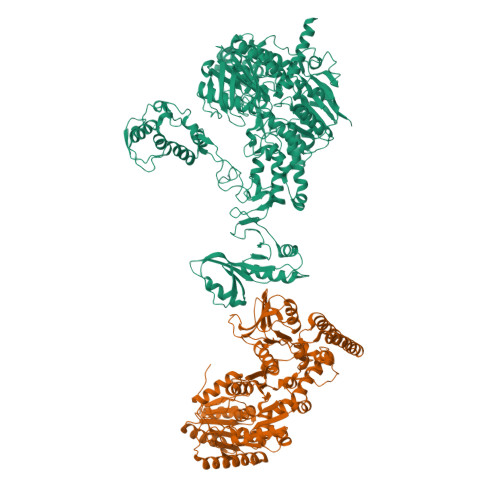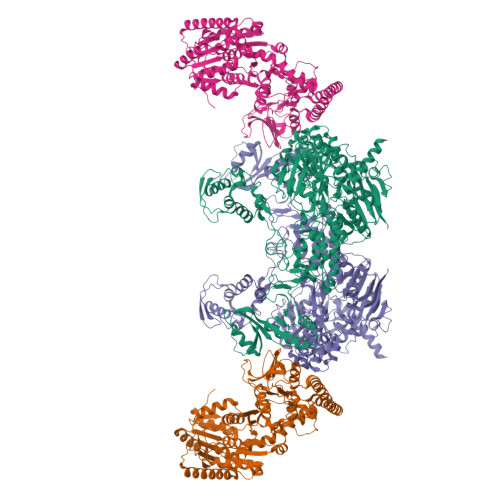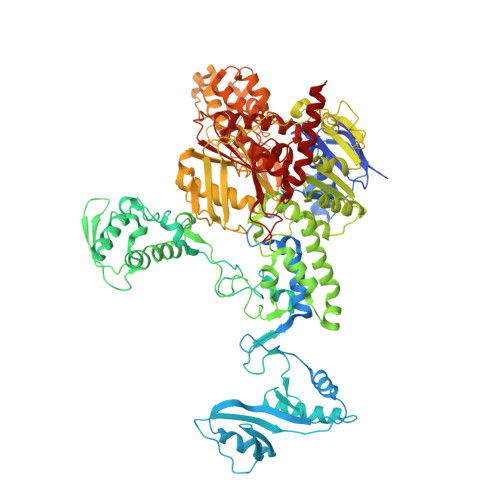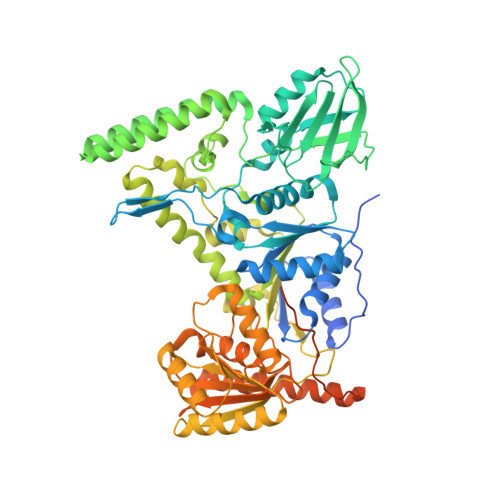Structure and mechanism of the UvrA-UvrB DNA damage sensor.
Pakotiprapha, D., Samuels, M., Shen, K., Hu, J.H., Jeruzalmi, D.(2012) Nat Struct Mol Biol 19: 291-298
- PubMed: 22307053
- DOI: https://doi.org/10.1038/nsmb.2240
- Primary Citation of Related Structures:
3UWX, 3UX8 - PubMed Abstract:
Nucleotide excision repair (NER) is used by all organisms to eliminate DNA lesions. We determined the structure of the Geobacillus stearothermophilus UvrA-UvrB complex, the damage-sensor in bacterial NER and a new structure of UvrA. We observe that the DNA binding surface of UvrA, previously found in an open shape that binds damaged DNA, also exists in a closed groove shape compatible with native DNA only. The sensor contains two UvrB molecules that flank the UvrA dimer along the predicted path for DNA, ~80 Å from the lesion. We show that the conserved signature domain II of UvrA mediates a nexus of contacts among UvrA, UvrB and DNA. Further, in our new structure of UvrA, this domain adopts an altered conformation while an adjacent nucleotide binding site is vacant. Our findings raise unanticipated questions about NER and also suggest a revised picture of its early stages.
Organizational Affiliation:
Department of Molecular and Cellular Biology, Harvard University, Cambridge, Massachusetts, USA.




















